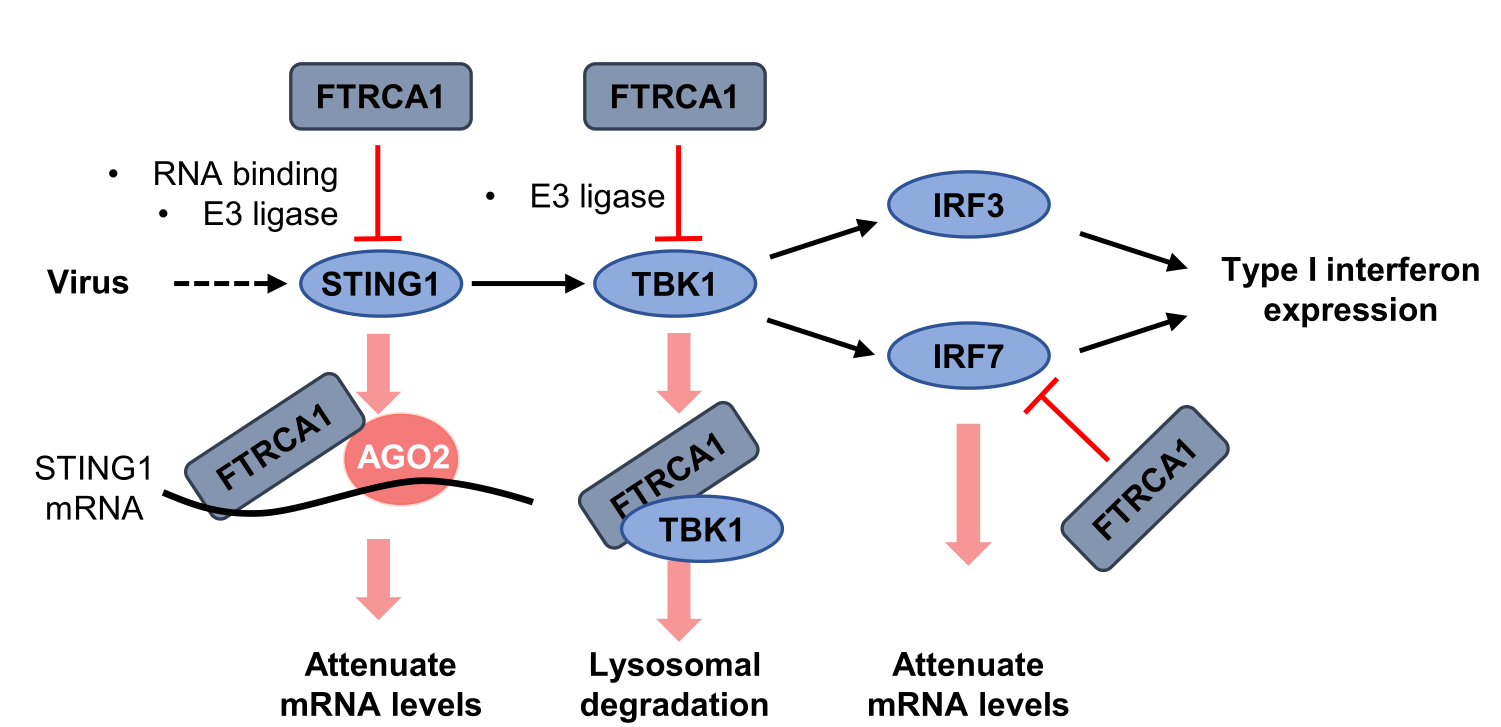Highlights
Species-specific Regulation of Interferon Mediates Antiviral Response in Fish
Since the majority of genes are functionally conserved across vertebrates, it has long been believed that changes in the regulation of gene expression underlie phenotypic differences between species and individuals within a species. With 26,000 extant fish species, it’s unclear whether and how fish species-specific genes contribute to the phenotypic differences in a species-unique manner?
Recently, a research group led by Prof. ZHANG Yibing from the Institute of Hydrobiology (IHB) of Chinese Academy of Sciences identified a crucian carp (C.auratus)-specific finTRIM (fish novel TRIM) gene, termed finTRIM C.auratus 1 (FTRCA1), as an RNA-binding E3 ligase from virally-infected cultured cells. This study was published in the Journal of Immunology.
In this study, cells overexpressing FTRCA1 and stimulator of interferon genes (STING) or interferon regulatory factor 7 (IRF7) were used in RNA-immunoprecipitation (RIP) assays. The results showed that FTRCA1 selectively binds to STING and IRF7 mRNA to attenuate mRNA levels. According to fluorescence microscopy, FTRCA1 likely used RNA-induced silencing complex (RISC) pathway to downregulate STING-IFN signaling.
The researchers further used in vitro-translated proteins in pulldown assays. They found that FTRCA1 directly bound to TANK-binding kinases 1 (TBK1) but not to STING or IRF7. In the presence of TBK1, the interaction of FTRCA1 and STING was detected, demonstrating that the interaction of FTRCA1 and STING protein was bridged by TBK1.
Finally, luciferase assays and western blot assays showed that FTRCA1 significantly inhibited the activation of interferon (IFN) protein induced by STING, IRF7 and TBK1. But FTRCA1-ΔRING which lost the E3 ligase activity domain of FTRCA1, lost the inhibitory effects. The results indicated that, for TBK1, FTRCA1 targeted protein degradation through lysosomal-dependent pathway, but for STING and IRF7, it targeted the mRNA decay, thus downregulating IFN response.
Considering the advent of precise genetic breeding in fish, this study could provide species-specific targets for gene editing to improve antiviral immunity in crucian carp.

FTRCA1 acquires RNA-binding activity and E3 ligase activity to fine-tune fish IFN response (Image by IHB)
(Editor: MA Yun)